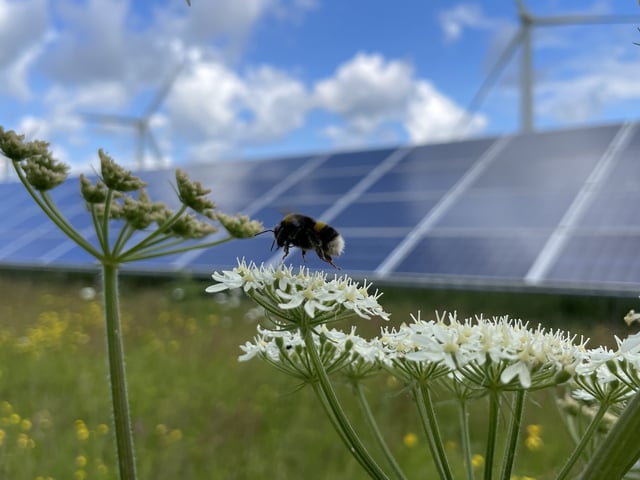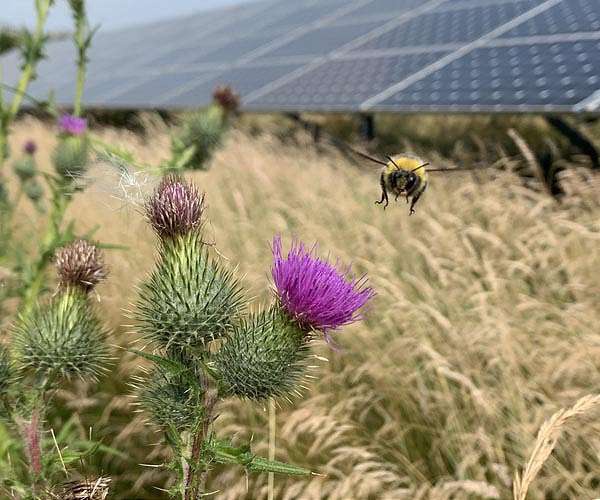Overview
- Researchers modeled Britain’s 1,042 existing solar farms at 10 m resolution by downscaling established RCP/SSP land‑use futures and adding key features such as hedgerows and wildflower patches.
- Site management was the dominant factor for on‑site outcomes, with wildflower margins predicting about a 120% increase in bumblebee numbers compared with turf.
- Landscape composition around solar farms more strongly determined bumblebee densities in nearby foraging areas than on‑site management alone.
- A sustainable future scenario with restored floral resources and habitat delivered the only modeled gains that extended beyond solar farm boundaries.
- The peer‑reviewed study, funded by NERC with support from Low Carbon and published in Global Change Biology, recommends strategic siting and biodiversity‑focused management to maximize conservation value.

